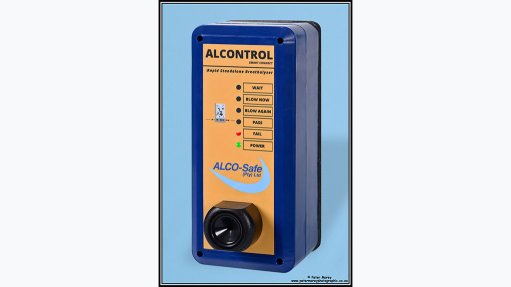Stainless steel industry remains resilient amid post-Covid recovery


HOLLOWING OUT 10 000 t of stainless steel finished products are imported every year, mostly hollowware and catering items
The levels of local stainless steel consumption have been declining for the past eight years, however, the industry remains buoyant after having seemingly recovered from the effects of the pandemic, says Southern Africa Stainless Steel Development Association (Sassda) acting executive director Michael Basson.
Before Covid, there had been an 18% drop in the local consumption of stainless steel, from March 2019 to March 2020, which equated to a decline from 145 000 t to 119 000 t.
In the following year, leading up to March 2021, Basson notes that the apparent consumption declined further to about 75 000 t, although the industry recovered by achieving consumption figures of 111 000 t by March 2022, reaching levels close to those before the pandemic.
Although encouraging, this figure does not match the 150 000 t/y consumed during 2015 to 2018.
“It is also far removed from the annual consumption of around 200 000 t that was used in the years preceding 2015,” he adds.
Sassda market intelligence specialist Lesley Squires says the industry is still dealing with various Covid-related challenges, but at this stage, a dependable energy supply is the main challenge.
“Initiatives to increase the local consumption of stainless steel will have no impact without the ability to produce which is dependent on access to a reliable supply of electricity.”
Squires adds that, during the latter part of August, energy-intensive members were not able to produce at all, while having to struggle to maintain their levels of productivity and the efficiency required to remain competitive in their respective markets.
Global logistics issues are also impacting timeous exports and imports, shipping costs and fabrication lead times. The current state of efficiency at the national ports also does not contribute to reaching the local consumption figures for stainless steel.
Squires says many projects in this regard have been halted by the pandemic and other challenges, but these projects still need to continue.
Global consumption of stainless steel is projected to continue at a growth rate of 5% to 6% a year and many sectors of the South African stainless steel industry report “excellent” current and medium-term order books, with good prospects to maintain this work level.
“Sassda’s member expectation index has shown that there was a steady increase over the last three months in business confidence, which is hovering above 55%,” Squires enthuses.
Further, Squires and Basson state that work on government’s Steel Master Plan (SMP) is continuing in earnest, with several industry bodies and role-players from the private sector fully involved in providing momentum for the initiatives from the SMP.
Basson adds that opportunities to increase local demand are being investigated and forwarded to the Department of Trade, Industry and Competition, and the Industrial Development Corporation for input and assistance.
For example, the localisation of items in the hollowware and cutlery subsector is being planned, as well as of products in the catering and beverage industries.
Basson says 10 000 t of stainless steel finished products are imported every year, mostly hollowware and catering items.
“This indicates that with such a localisation initiative in place, formed by the SMP, a sizeable share of this tonnage can be added to local consumption,” he states, adding that discussions have been held with a large mass retailer to supply these products into the local market.
Squires notes that this initiative can add up to 5% to local consumption and lead to sustainable job creation.
Some of the initiatives also focus on increasing local capacity to manufacture intermediary products such as pipe, tube and wire.
The local industry has shown in the past how resilient and adaptable it can be in difficult times. Stainless steel is not only a preferred material for many industries and products but in most cases also the only material that would be used, Basson concludes.
Article Enquiry
Email Article
Save Article
Feedback
To advertise email advertising@creamermedia.co.za or click here
Comments
Press Office
Announcements
What's On
Subscribe to improve your user experience...
Option 1 (equivalent of R125 a month):
Receive a weekly copy of Creamer Media's Engineering News & Mining Weekly magazine
(print copy for those in South Africa and e-magazine for those outside of South Africa)
Receive daily email newsletters
Access to full search results
Access archive of magazine back copies
Access to Projects in Progress
Access to ONE Research Report of your choice in PDF format
Option 2 (equivalent of R375 a month):
All benefits from Option 1
PLUS
Access to Creamer Media's Research Channel Africa for ALL Research Reports, in PDF format, on various industrial and mining sectors
including Electricity; Water; Energy Transition; Hydrogen; Roads, Rail and Ports; Coal; Gold; Platinum; Battery Metals; etc.
Already a subscriber?
Forgotten your password?
Receive weekly copy of Creamer Media's Engineering News & Mining Weekly magazine (print copy for those in South Africa and e-magazine for those outside of South Africa)
➕
Recieve daily email newsletters
➕
Access to full search results
➕
Access archive of magazine back copies
➕
Access to Projects in Progress
➕
Access to ONE Research Report of your choice in PDF format
RESEARCH CHANNEL AFRICA
R4500 (equivalent of R375 a month)
SUBSCRIBEAll benefits from Option 1
➕
Access to Creamer Media's Research Channel Africa for ALL Research Reports on various industrial and mining sectors, in PDF format, including on:
Electricity
➕
Water
➕
Energy Transition
➕
Hydrogen
➕
Roads, Rail and Ports
➕
Coal
➕
Gold
➕
Platinum
➕
Battery Metals
➕
etc.
Receive all benefits from Option 1 or Option 2 delivered to numerous people at your company
➕
Multiple User names and Passwords for simultaneous log-ins
➕
Intranet integration access to all in your organisation



















